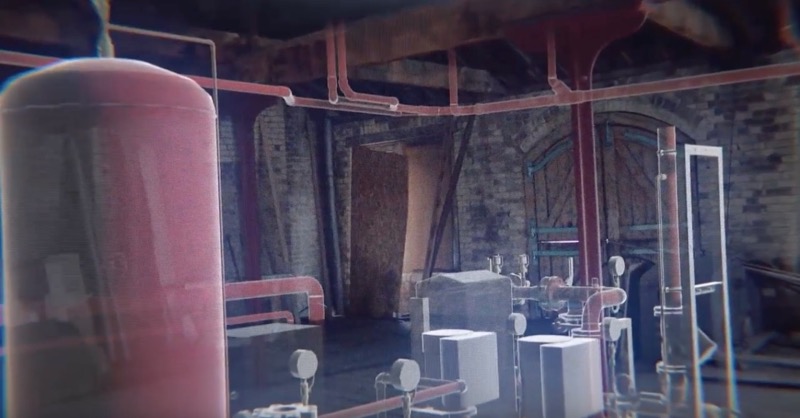Crofton Design is a relatively small consultancy that offers structural, mechanical, electrical, and civil engineering design services for the construction industry. It’s an unlikely candidate for becoming a software vendor, but that’s just what’s happening with the public beta release of its Tango-based 3D capture application, Cloud Chamber.
Accuracy, workflow
The patent-pending technology piggybacks on the AR-enabling sensors loaded into the new generation of mobile phones. “For small scans,” Crofton director Steven Hale explains, “it is highly accurate, down to 1mm. We are still testing this, though. For larger scans where the phone is moving, you do get drift because of the reliance on tracking, so it is more useful for capturing small scans.” However, he adds, Crofton already has “some thoughts and work in the pipeline to improve accuracy over large areas” for the final release.
Cloud Chamber’s capture workflow is designed to be as simple as taking a video of your lunch. As shown in the video below, the user simply presses record, ensures coverage of the object to be scanned, and then hits a button to convert the data to a point cloud file. Hale says the workflow will be even simpler in the future, with optimization to speed up the conversion process so the conversion begins as soon as you stop recording.
Since phones are not exactly known for their computing power, Crofton developed a lightweight proprietary file format to enable faster processing. No need to fear incompatibility issues, though, as the app saves to a standard PTX format for use in a number of design applications. Hale notes that his team uses Recap and Revit with the files.
Coming improvements and the killer feature
Currently, Hale tells me, the beta version still imposes some limitations. For one, users will need to download the files to their computers to work with them, but the company is already working to incorporate cloud storage. The short-term roadmap includes adding RGB data mapping and simultaneous photogrammetry capture from the smartphone. A longterm development roadmap includes the planned addition of GPS localization, support for QR codes for absolute reference points on a construction site, and incorporating some cutting-edge experimental tech developed in academia to improve the accuracy of larger scans.
However many features may be coming in the future, Hale tells me that the killer feature is already there. The real power of Cloud Chamber, he explains, is that it uses the AR and depth sensors in next-gen phones to turn them into “a commercial-grade scanner in the hands of every person in the construction supply chain for the cost of a cup of a coffee.”
Though alpha testers have already using it to capture quick and dirty scans to add to BIMs, or to verify new construction against a design model, Crofton’s ambitions are bigger. “What we really want to do,” Hale continues, “is make this a commoditized product that exists on a large enough number of phones” that his team can see what kind of disruptive use cases result.
Why Crofton?
This is a story about a new application, sure, but an equally interesting story lies in the company that made it.
Hale explained to me that the software was born when Crofton started making plans to grow. “As with many SMEs,” he said, “the desire to expand our business into overseas markets is hindered by our size.” The company investigated this possibility during a trade mission to Colombia in 2015 and quickly discovered that expanding to new markets required a huge amount of capital expenditure. Instead, they decided to exploit their in-house expertise and found an R&D team that could find ways to develop products that “work in tandem” with the firm’s existing services.
“The first project we identified involved AI & engineering design,” Hale said, ”but we decided that we should experiment with something smaller so that we could get an understanding of the development lifecycles for software product development, as we had no previous experience.” That meant Tango. Hale knew that if his team could access the sensor data, they could make use of them to capture point cloud data dense enough to be useful for construction.
“As it turns out,” he told me, “the challenge was greater than we thought at the outset, but that is one of the lessons we wanted to learn. We decided to stick with the project, as we could see real uses for it. If we were able to be the first past the post, we could obtain intellectual property protection for the technology we were developing—which is what we are hoping we have done, having filed our patent last year.”
Rather than fighting commodification as so many others have done, Crofton has leaned in and turned that commodification into a killer feature: “the ability to capture the 3D environment without any additional hardware.”
For more information, contact Crofton or test out the app on your Android phone here.








